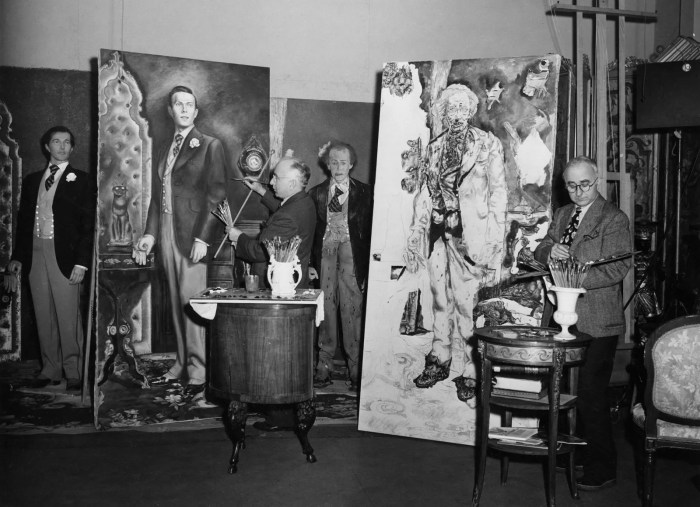Picture this: a handsome young man, Dorian Gray, makes a deal with the devil, trading his soul for eternal youth and beauty. Sounds like a pretty sweet deal, right? But, as we all know, nothing in life is ever truly free.
Oscar Wilde’s classic novel, -The Picture of Dorian Gray*, dives into the dark side of obsession with beauty and the consequences of choosing pleasure over principle. It’s a story that’s both timeless and relevant, exploring themes that still resonate with us today.
Dorian, a man of incredible charm and good looks, falls under the spell of Lord Henry Wotton, a hedonistic philosopher who preaches the pursuit of pleasure above all else. Lord Henry’s words plant a seed of doubt in Dorian’s mind, leading him down a path of self-indulgence and moral decay.
As Dorian revels in his youthful beauty, his true self, his soul, begins to rot and fester, reflected in the growing ugliness of a secret portrait. It’s a chilling reminder that beauty fades, and the choices we make have consequences.
The Aesthetic and Moral Dilemma
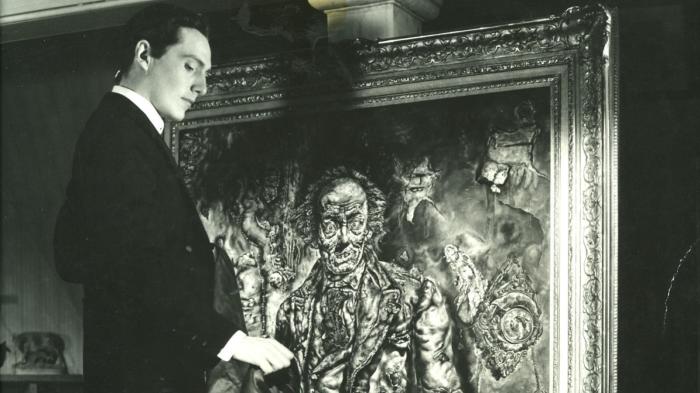
Oscar Wilde’s
-The Picture of Dorian Gray* delves into the captivating and perilous intersection of beauty, morality, and the human condition. At its core lies a central conflict
the relentless pursuit of eternal youth and beauty, which ultimately leads to a profound moral decay. This essay will examine the intricate relationship between Dorian’s quest for aesthetic perfection and the subsequent erosion of his ethical compass, ultimately highlighting the devastating consequences of prioritizing superficiality over virtue.
Lord Henry’s Influence on Dorian’s Moral Decline
Lord Henry Wotton, a charismatic and cynical aristocrat, acts as a catalyst for Dorian’s moral downfall. His philosophy, steeped in hedonism and a disdain for conventional morality, profoundly influences Dorian’s outlook on life. Lord Henry’s pronouncements, such as his infamous quote, “To live is the rarest thing in the world.
Most people exist, that is all,” encapsulate his belief that pleasure and self-indulgence are the only true pursuits worth considering. Dorian, initially drawn to Lord Henry’s charm and wit, gradually succumbs to his seductive ideas, embracing a life of indulgence and self-gratification.
“To live is the rarest thing in the world. Most people exist, that is all.”
Lord Henry’s influence is evident in Dorian’s gradual transformation from an innocent youth to a morally corrupt individual. Dorian’s initial attraction to beauty is slowly corrupted by Lord Henry’s hedonistic philosophy, leading him to prioritize pleasure and self-gratification above all else.
This shift is reflected in Dorian’s actions, which become increasingly reckless and self-serving.
The Nature of Beauty and Youth
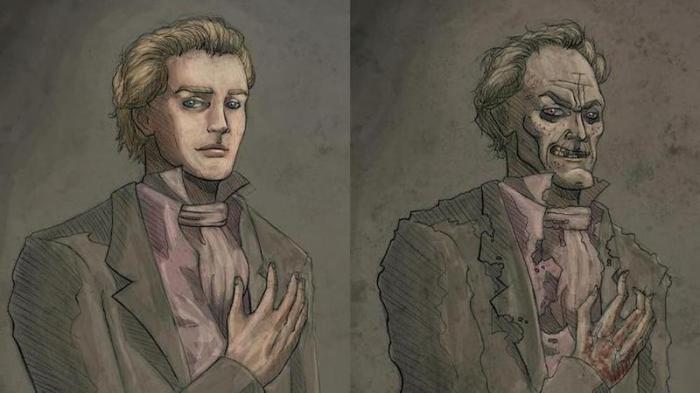
Dorian Gray’s relentless pursuit of eternal youth and beauty serves as a chilling reflection of society’s obsession with physical appearance, a theme that resonates with the modern world. Oscar Wilde, through his intricate narrative, explores the fleeting nature of youth and beauty, exposing the moral dilemmas that arise when individuals prioritize outward appearance over inner character.
The Fleeting Nature of Youth and Beauty
Wilde masterfully portrays the inevitable passage of time and its relentless erosion of youth and beauty. Dorian’s portrait serves as a stark reminder of the transience of physical perfection, as it remains eternally youthful while Dorian himself ages. The contrast between the unchanging portrait and Dorian’s aging body highlights the fleeting nature of beauty and the impossibility of holding onto youth forever.
This concept resonates deeply with the anxieties of our modern society, where youth and beauty are often equated with success and desirability.
The Societal Obsession with Physical Appearance
The novel’s exploration of Dorian’s relentless pursuit of youth and beauty unveils the detrimental impact of societal obsession with physical appearance. The Victorian era, like our own, placed a premium on outward beauty, leading individuals to prioritize physical perfection over genuine character and substance.
Dorian’s descent into moral corruption is fueled by his desire to maintain his youthful appearance, showcasing the dangers of equating outward beauty with inherent worth. This societal obsession with physical appearance, exemplified by Dorian’s self-perception, can lead to a distorted sense of self-worth and a relentless pursuit of superficiality.
The Role of Dorian’s Youthful Innocence and Its Gradual Corruption
Dorian’s initial innocence and youthful naiveté play a pivotal role in his transformation. He is initially captivated by Lord Henry’s hedonistic philosophy, which encourages the pursuit of pleasure and the rejection of moral constraints. This philosophy, coupled with his obsession with maintaining his youthful appearance, gradually corrupts Dorian’s soul, leading him down a path of self-destruction.
The contrast between his initial innocence and his eventual depravity underscores the destructive power of unchecked desires and the allure of fleeting beauty.
Dorian’s Initial Appearance vs. His Later Transformation
Dorian’s initial appearance is described as strikingly beautiful, with an almost angelic aura. His youthful innocence and captivating beauty draw admiration and attention, making him the object of desire and envy. However, as he succumbs to his corrupt desires, his appearance gradually deteriorates, reflecting the inner decay of his soul.
His once radiant beauty is replaced by a haunting ugliness, a physical manifestation of his moral depravity. This transformation underscores the connection between inner character and outward appearance, suggesting that true beauty lies not in physical perfection but in the cultivation of a virtuous soul.
Dorian’s Changing Character
The following table illustrates the changing aspects of Dorian’s character throughout the story:| Characteristic | Initial Stage | Later Stage ||—|—|—|| Appearance | Youthful, innocent, and strikingly beautiful | Aging, haggard, and marked by corruption || Character | Innocent, naive, and idealistic | Selfish, hedonistic, and morally corrupt || Values | Moral, ethical, and compassionate | Immoral, hedonistic, and indifferent to the suffering of others || Relationships | Genuine, loving, and respectful | Superficial, manipulative, and exploitative || Moral Compass | Guided by conscience and a sense of right and wrong | Guided by self-interest and a desire for pleasure |
The Power of Art and Influence
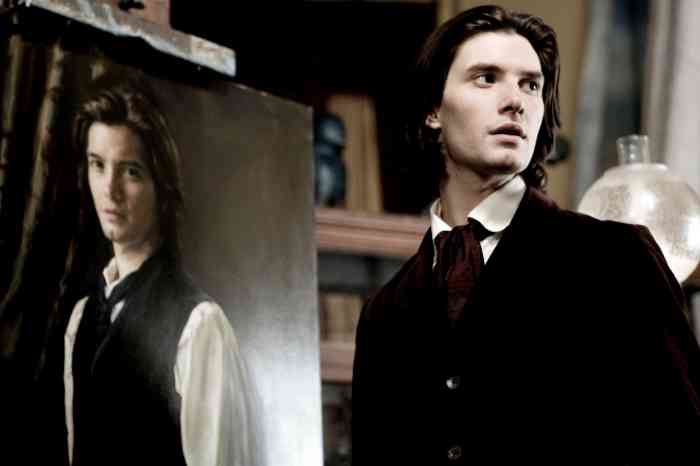
Dorian Gray’s journey from innocent youth to corrupt hedonist is a powerful testament to the influence of art and the people who create it. The novel explores how artistic expression can both inspire and corrupt, and how the artist’s responsibility to their subject is intertwined with the subject’s own moral choices.
Basil Hallward’s Influence on Dorian
Basil Hallward’s art is deeply connected to Dorian’s life and choices. Basil’s portrait of Dorian is a masterpiece, capturing not only Dorian’s physical beauty but also his inherent innocence and purity. This portrait becomes a symbol of Dorian’s lost youth and the corrupting influence that takes hold of him.
“The painter was a man who had a great deal of the artist in him—that is to say, he was intensely and passionately devoted to his art, and saw in it a mode of expression superior to all others. He felt that he could tell the story of his life in paint. He had been to Dorian Gray what music had been to Chopin, what words had been to Shakespeare.”
Basil’s love for Dorian is evident in his art, and this love becomes a powerful force in Dorian’s life. However, Basil’s art also serves as a constant reminder of Dorian’s own mortality, which fuels his desire to escape the aging process and maintain his youthful beauty.
The portrait becomes a symbol of this desire, and Dorian’s obsession with preserving his youthful appearance ultimately leads him down a path of self-destruction.
Lord Henry’s Cynical Worldview
Lord Henry Wotton’s cynical worldview plays a significant role in corrupting Dorian. Lord Henry is a master of wit and charm, but his words are laced with a poisonous cynicism that erodes Dorian’s moral compass. Lord Henry’s influence is particularly evident in his aphorisms, which Dorian eagerly absorbs and applies to his own life.
“The only way to get rid of temptation is to yield to it.”
Lord Henry’s cynical pronouncements about the fleeting nature of beauty, the futility of morality, and the pursuit of pleasure as the ultimate goal, lead Dorian to embrace a hedonistic lifestyle. He abandons his former ideals and embraces a life of self-indulgence, believing that he can escape the consequences of his actions by remaining physically youthful.
Art and Literature as Inspiration and Temptation
Art and literature serve as both inspiration and temptation for Dorian. He is initially drawn to the beauty and power of artistic expression, but he is also seduced by the decadent and immoral themes that he encounters in his reading.
Dorian’s fascination with the works of Oscar Wilde, particularly his play “Salomé,” further fuels his desire for pleasure and his pursuit of forbidden experiences.
“The world is a stage, and each man plays many parts.”
You know that whole “beauty is fleeting” thing? Well, Oscar Wilde’s The Picture of Dorian Graytakes that to a whole new level. Dorian sells his soul for eternal youth, but his portrait ages instead, capturing the dark secrets he hides. If you wanna get your hands on a copy of this wild ride, Download And Listen Here.
Seriously, it’s a must-read if you’re into classic lit with a side of creepy vibes.
Dorian’s reading of Oscar Wilde’s works exposes him to a world of aestheticism and hedonism, which he finds both alluring and dangerous. He is drawn to the beauty of the language and the subversive nature of the themes, but he is also aware of the potential for self-destruction that lies within this world.
Examples of Artworks and Literary References
Several specific artworks and literary references shape Dorian’s worldview. The portrait of Dorian, painted by Basil Hallward, serves as a constant reminder of his beauty and the passage of time. Dorian’s obsession with preserving his youthful appearance is fueled by his desire to maintain the image captured in the portrait.
The works of Oscar Wilde, particularly “Salomé,” provide Dorian with a blueprint for his hedonistic lifestyle, introducing him to a world of aestheticism and moral ambiguity.Dorian’s reading of Shakespeare’s plays, especially “Hamlet,” also influences his worldview. He is drawn to the themes of revenge and self-destruction, and he sees himself in Hamlet’s struggle with moral dilemmas and the consequences of his actions.
These literary references, combined with Lord Henry’s cynical worldview, contribute to Dorian’s descent into moral depravity.
The Importance of Redemption and Self-Reflection
Dorian Gray’s journey through beauty, pleasure, and sin raises a compelling question: Can redemption be possible for someone who has indulged in such extreme self-indulgence and moral corruption? The answer lies in the complex interplay between his actions, his conscience, and the consequences he faces.
The Possibility of Redemption
While Dorian’s actions are undeniably heinous, the possibility of redemption remains a compelling aspect of his story. Throughout his life, he exhibits moments of remorse and a yearning for a return to innocence. These fleeting glimpses of self-awareness, though often overshadowed by his vanity and self-absorption, suggest a flicker of hope for change.
However, redemption for Dorian is not a simple matter of a sudden epiphany or a quick act of atonement. It requires a deep and enduring transformation of his soul, a process that must confront the root of his moral decay.
The Role of Self-Reflection and Conscience
Dorian’s downfall is not solely a consequence of external forces but also a result of his own choices and his suppression of his conscience. His refusal to acknowledge the consequences of his actions, particularly his growing detachment from the portrait that reflects his true self, leads him down a path of self-destruction.
The portrait becomes a constant reminder of his inner darkness, a haunting symbol of his guilt and the consequences of his vanity. His inability to face this truth ultimately contributes to his tragic end.
Dorian’s Final Confrontation with His Portrait
Dorian’s final confrontation with his portrait represents a pivotal moment in his journey. It is a confrontation with his own mortality, with the consequences of his actions, and with the true nature of his soul. The portrait, which had served as a symbol of his youthful beauty and immortality, now reveals the ravages of his sins, the true reflection of his corrupt heart.
This final confrontation forces Dorian to confront the consequences of his choices, but it also highlights the enduring power of his desire for redemption.
Themes of Guilt, Regret, and the Search for Forgiveness
Dorian’s story is deeply infused with themes of guilt, regret, and the search for forgiveness. His actions, driven by vanity and a thirst for pleasure, ultimately lead him to a state of profound isolation and despair. He is haunted by the consequences of his choices, the weight of his sins, and the yearning for redemption.
This internal struggle reflects the human capacity for both great good and great evil, and the potential for redemption even in the face of profound darkness.
Dorian’s Ultimate Fate
The final scene of the novel, where Dorian destroys his portrait, is a powerful and ambiguous moment. It suggests a final act of self-destruction, a desperate attempt to escape the consequences of his actions. However, it also leaves room for interpretation.
Some argue that Dorian’s destruction of the portrait represents a symbolic act of self-forgiveness, a final attempt to reclaim his soul and find peace. Ultimately, Dorian’s fate is left open to the reader’s interpretation, inviting reflection on the nature of redemption, the consequences of our choices, and the enduring power of the human spirit.
Book Review: The Picture of Dorian Gray
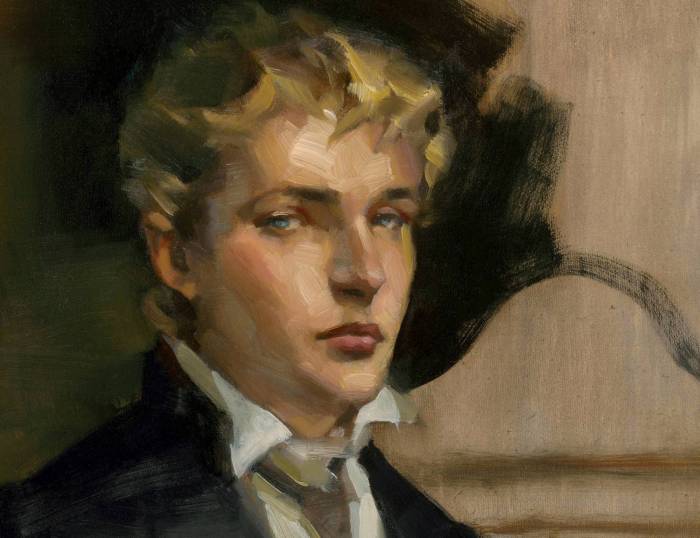
Oscar Wilde’s “The Picture of Dorian Gray” is a captivating novel that delves into the seductive nature of beauty, the corrupting power of vanity, and the consequences of pursuing pleasure without moral compass. The story follows the titular character, Dorian Gray, a young man of extraordinary beauty who makes a Faustian bargain to maintain his youthful appearance while his portrait bears the burden of his sins.
Through Dorian’s journey, Wilde explores the complexities of art, morality, and the human condition, leaving readers with a profound understanding of the fragility of virtue and the enduring allure of beauty.
The Plot and Characters
The novel unfolds in Victorian London, where Dorian Gray, a naive and innocent youth, is introduced to the hedonistic world of Lord Henry Wotton. Lord Henry, a charismatic and cynical aristocrat, becomes Dorian’s mentor, instilling in him a philosophy of self-indulgence and the pursuit of pleasure.
Dorian, captivated by Lord Henry’s seductive words, makes a wish to remain eternally young while his portrait ages and bears the marks of his transgressions. This wish is granted by the enigmatic Basil Hallward, a painter who has created a portrait of Dorian that captures his youthful beauty.
As Dorian embarks on a life of debauchery and moral decay, his portrait becomes a chilling reflection of his inner corruption. The portrait, hidden away from the world, becomes a symbol of Dorian’s secret shame and the consequences of his choices.
The novel follows Dorian’s descent into darkness, as he becomes increasingly consumed by his pursuit of pleasure and loses all sense of morality. The story culminates in a tragic climax, where Dorian, driven by his guilt and fear, destroys the portrait, only to find that his own physical form has aged and decayed, reflecting the years of sin he has committed.
Wilde’s Writing Style and Its Effectiveness
Oscar Wilde’s writing style is characterized by its wit, epigrammatic brilliance, and elegant prose. His use of sharp dialogue, witty observations, and aphoristic pronouncements creates a sense of intellectual and aesthetic pleasure. Wilde’s writing is both entertaining and thought-provoking, inviting readers to contemplate the themes of beauty, morality, and the human condition.
“To live is the rarest thing in the world. Most people exist, that is all.”
Lord Henry Wotton
Wilde’s use of language is masterful, crafting sentences that are both elegant and incisive. His descriptions are vivid and evocative, transporting readers to the opulent world of Victorian London and capturing the beauty and decadence of the era. Wilde’s prose is a testament to his skill as a stylist and his ability to use language to create a world both alluring and unsettling.
Dorian Gray’s quest for eternal youth and beauty was pretty wild, right? But, if you’re looking to really level up your game, check out The Art of War – it’s like a strategy guide for life. It’s all about outsmarting your opponents, just like Dorian tried to outsmart aging.
And trust me, you’ll be a total boss at navigating the ups and downs of life if you apply those principles.
The Enduring Relevance of “The Picture of Dorian Gray”
“The Picture of Dorian Gray” remains a relevant and timeless novel due to its exploration of universal themes that continue to resonate with readers today. The novel’s exploration of the nature of beauty, the corrupting power of vanity, and the importance of moral responsibility are issues that continue to be relevant in a world obsessed with appearances and the pursuit of youth.The novel’s exploration of the relationship between art and morality is particularly relevant in a contemporary world where the lines between reality and illusion are increasingly blurred.
Wilde’s cautionary tale serves as a reminder of the importance of introspection and the dangers of allowing our pursuit of beauty and pleasure to overshadow our moral compass.
Comparisons to Other Works
“The Picture of Dorian Gray” can be compared to other works by Oscar Wilde, such as “Lady Windermere’s Fan” and “Salome.” These works, like “The Picture of Dorian Gray,” explore themes of social hypocrisy, the nature of beauty, and the consequences of pursuing pleasure without moral restraint.The novel can also be compared to other literary classics that explore the Faustian bargain, such as Goethe’s “Faust” and Mary Shelley’s “Frankenstein.” These works, like “The Picture of Dorian Gray,” examine the consequences of seeking power and knowledge without considering the moral implications.
Recommendation for Readers
“The Picture of Dorian Gray” is a must-read for anyone interested in exploring themes of beauty, morality, and the power of art. The novel is a captivating and thought-provoking work that will leave readers questioning their own values and the nature of the human condition.
The novel’s timeless themes and Wilde’s masterful prose make it a work that will continue to be enjoyed and debated for generations to come.
Last Word
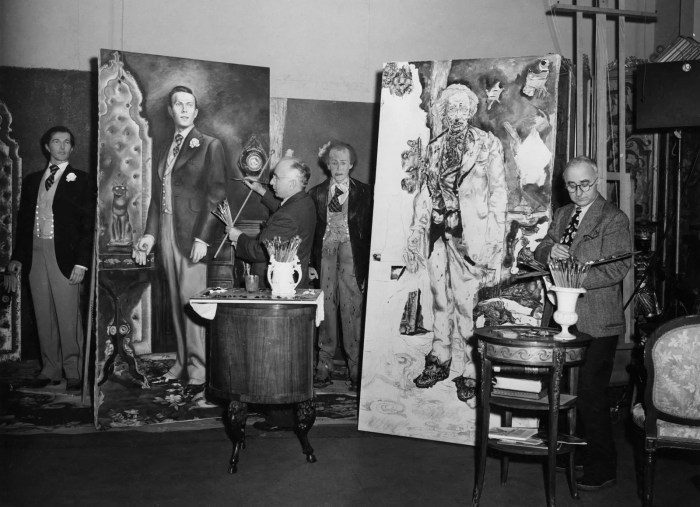
The Picture of Dorian Gray is a cautionary tale, a gothic masterpiece that explores the human obsession with beauty and the dangers of living a life devoid of morality. It’s a story that asks us to consider the price of our desires and the importance of living a life that is both beautiful and good.
So, the next time you’re scrolling through Instagram and feeling a little envious of someone’s perfect selfie, remember Dorian Gray. Beauty fades, but the consequences of our choices last a lifetime.
Quick FAQs
What is the significance of the portrait in-The Picture of Dorian Gray*?
The portrait acts as a physical manifestation of Dorian’s soul. As Dorian indulges in his vices, the portrait becomes increasingly hideous, reflecting the corruption within him. It serves as a constant reminder of the consequences of his actions.
What happens to Dorian Gray at the end of the novel?
The ending of -The Picture of Dorian Gray* is a bit ambiguous, but it is generally understood that Dorian realizes the full extent of his moral decay and tries to destroy the portrait, which in turn destroys him. It’s a tragic ending that highlights the consequences of a life lived solely for pleasure.
How does-The Picture of Dorian Gray* reflect Victorian society?
The novel reflects the Victorian obsession with beauty and youth, as well as the hypocrisy and moral ambiguity of the era. It critiques the societal pressures that led individuals to prioritize appearances over genuine character.

